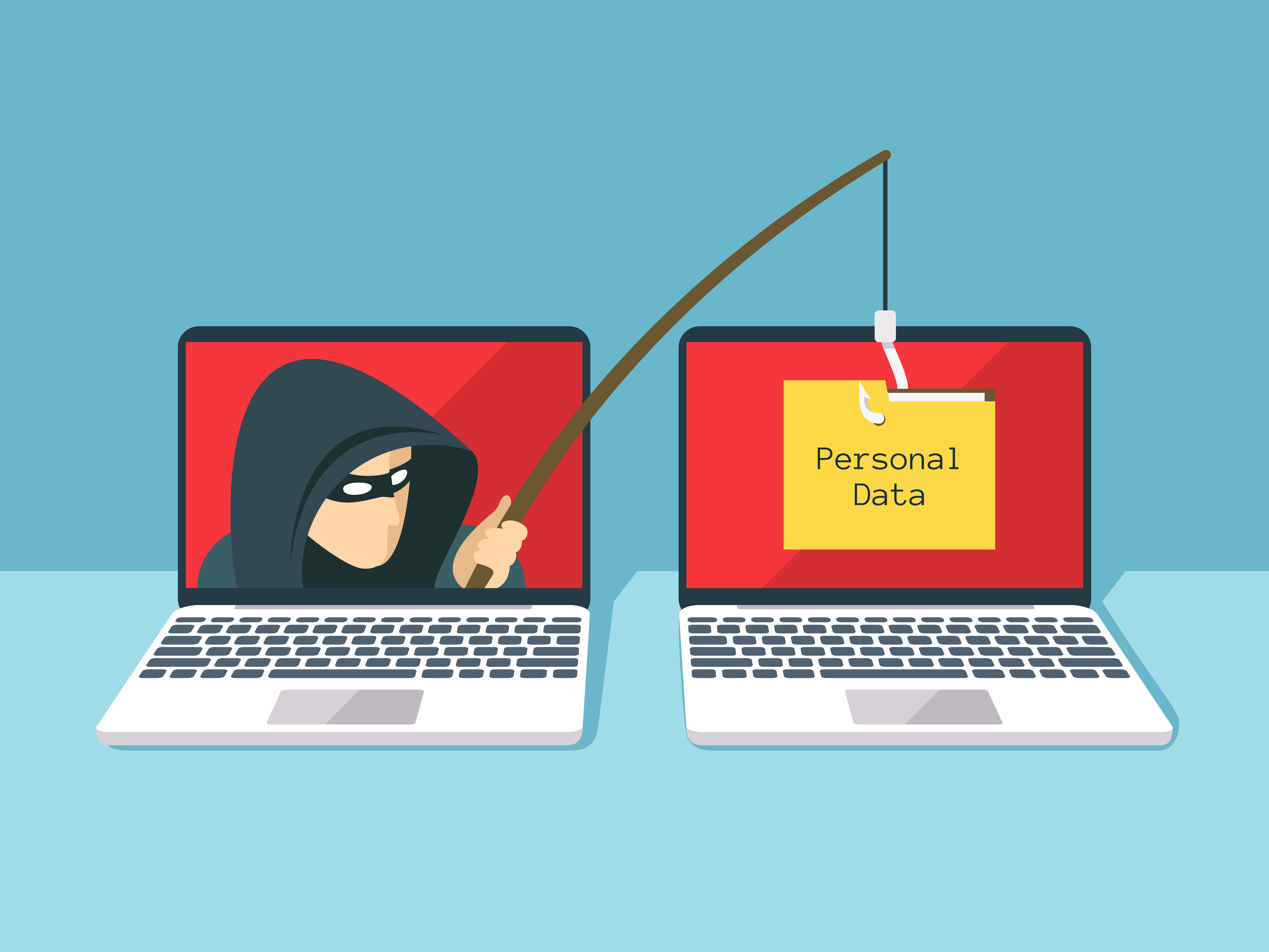Phishing
Introduction to Phishing

Phishing is a deceptive cyber tactic employed by malicious actors to trick individuals into revealing sensitive information such as usernames, passwords, and financial details. The term “phishing” is a play on the word “fishing,” as perpetrators cast a wide net, hoping to lure unsuspecting individuals into divulging their personal data.
Key Characteristics of Phishing:
- Email Spoofing: Phishers often use emails that appear legitimate, mimicking reputable sources such as banks, social media platforms, or government agencies.
- Deceptive Links: Phishing emails contain links that lead to fraudulent websites designed to mimic authentic ones. These sites prompt users to enter confidential information.
- Urgency and Fear Tactics: Phishers create a sense of urgency or fear to manipulate individuals into acting quickly without thoroughly verifying the legitimacy of the communication.
- Impersonation: Cybercriminals may impersonate trusted entities, such as colleagues, friends, or even educational institutions, to gain the trust of their targets.
Protecting Against Phishing:
- Verify Email Sources: Always double-check the sender’s email address, especially if the message conveys urgency or requests sensitive information.
- Hover over Links: Hover over links in emails to preview the destination URL before clicking. Be cautious if the link address looks suspicious or differs from the expected site.
- Question Urgency: Phishing emails often instill a sense of urgency. Take a moment to consider whether the request aligns with normal communication practices.
- Use Best Authentication: Implement two-factor authentication whenever possible to add an extra layer of security to your accounts.
- Stay Informed: Regularly update your knowledge about phishing techniques and familiarize yourself with common tactics employed by cybercriminals.

Phishing vs. Other Social Engineering Techniques
Phishing, as a method of social engineering, relies on manipulating trust or misleading individuals to obtain sensitive information such as passwords or financial data. This often occurs through email campaigns, where malicious actors send deceptive emails mimicking trusted sources and attempt to obtain victims’ personal information or introduce malicious elements, such as links or attachments, used in various fraudulent operations. Phishing often involves emails claiming urgency or importance.
Other Social Engineering Techniques
- Pharming is a cyber attack aiming to redirect website traffic to a fraudulent site without the user’s knowledge. Often occurs without direct user intervention; can be implemented by altering DNS records or using malicious software.
- Baiting is a technique where attackers offer something enticing (e.g., a free USB device) that users download or click on, exposing their system to risk. Threat arises when users succumb to the temptation of getting something for free or unusual.
- Pretexting is a technique where an attacker uses fabricated stories or distorted information to obtain personal information. Often involves crafted narratives to justify a request for personal information.
- Impersonation is a technique where attackers leverage the identities of individuals, organizations, or other entities to deceive users. Attackers may pose as colleagues, friends, or trusted figures that the victim may rely on.

Common phishing methods
- Email Phishing:
- Description: Email phishing is a widely used method where attackers send deceptive emails to a large number of recipients. These emails often impersonate reputable entities, such as banks or government agencies, and contain links or attachments that lead to fraudulent websites or malware.
- Characteristics: Generic and sent to a broad audience; relies on mass distribution and impersonation.
- Spear Phishing:
- Description: Spear phishing is a targeted form of phishing where attackers customize their deceptive emails for specific individuals or organizations. The attackers gather information about the target, such as job roles, relationships, and interests, to make the phishing attempt more convincing.
- Characteristics: Highly personalized; attackers invest time in research for a higher chance of success; often appears as if coming from a known or trusted source.
- Smishing:
- Description: Smishing, or SMS phishing, involves phishing attacks through text messages (SMS). Attackers send messages claiming to be from a trustworthy source, prompting recipients to click on links or reply with sensitive information.
- Characteristics: Targets mobile users; uses text messages to create a sense of urgency; may contain links leading to phishing websites or phone numbers to call.
- Clone Phishing:
- Description: Clone phishing involves creating a replica of a legitimate and previously delivered email. Attackers replace certain elements, such as links or attachments, with malicious ones. The cloned email is then sent to the same recipient, exploiting trust in the original communication.
- Characteristics: Targets individuals who have received a legitimate email; leverages familiarity to increase success rates.
- Whaling:
- Description: Whaling is a form of phishing that specifically targets high-profile individuals, such as CEOs or executives. The goal is to gain access to sensitive company information or financial data by exploiting the authority and trust associated with these individuals.
- Characteristics: Targets high-ranking individuals; often involves sophisticated and well-researched tactics; aims for high-value information.

Real- world examples
- 5 most costly phishing attacks https://www.checkpoint.com/cyber-hub/threat-prevention/what-is-phishing/the-top-5-phishing-scams-of-all-times/ , https://www.itgovernance.eu/blog/en/the-5-biggest-phishing-scams-of-all-time
- 15 Examples of Real Social Engineering Attacks https://www.tessian.com/blog/examples-of-social-engineering-attacks/
- 11 types of phishing https://www.pandasecurity.com/en/mediacenter/tips/types-of-phishing/
- 8 types of phishing attacks and how to identify them https://www.csoonline.com/article/563353/8-types-of-phishing-attacks-and-how-to-identify-them.html
- Executive Phishing: Real World Examples & Strategies https://www.valimail.com/guide-to-phishing/executive-phishing/
- Phishing Database: Real Phishing Email Examples & Threats https://cofense.com/knowledge-center-hub/real-phishing-email-examples/
- Phishing Education & Training /Indiana University https://phishing.iu.edu/stories/index.html
Preventing phishing attacks involves a combination of awareness, education, and technical safeguards. Here are some general strategies to prevent the main types of phishing attacks:
- Community Training and Awareness:
- Conduct regular training to educate [school] community about the different types of phishing attacks.
- Teach them how to recognize phishing emails, including checking sender addresses, avoiding clicking on suspicious links, and verifying unexpected requests for sensitive information.
- Email Filtering and Security Software:
- Implement robust email filtering systems (IT staff) and newest email client software (users) that can identify and filter out potential phishing emails.
- Utilize advanced security software that can detect and block phishing attempts in real-time.
- Multi-Factor Authentication (MFA):
- Enforce the use of multi-factor authentication wherever possible to add an extra layer of security.
- Even if login credentials are compromised, MFA helps prevent unauthorized access by requiring an additional verification step.
- Keep Software and Systems Updated:
- Regularly update operating systems, browsers, and security software to patch vulnerabilities that attackers might exploit.
- Implement automatic updates where possible to ensure timely protection against emerging threats.
- Verify Requests for Sensitive Information:
- Train [school] community to verify any unexpected requests for sensitive information by contacting the requester through a known, official channel before providing any details.
- Encourage a culture of scepticism, especially when urgency or pressure is applied.
- Use appropriate security tools (IT staff):
- Implement email authentication protocols to verify the authenticity of incoming emails.
- Use intrusion detection systems to identify and block malicious activities.
- Conduct regular security audits to identify and address vulnerabilities.
- Order services of experienced professionals!
- Reporting and Incident Response (School administration):
- Establish a clear and easy-to-use mechanism for community to report suspicious emails or incidents promptly.
- Have a well-defined incident response plan to quickly mitigate the impact of a successful phishing attack
What steps to take after falling for a phishing message?
- In the unfortunate event that you’ve responded to a phishing email and disclosed company or bank account details, consider the following actions promptly:
- Alter passwords across all platforms using the same password. Update login credentials for other websites if you’ve shared your login details.
- In case your account was compromised before detection, reach out to your service provider for account reinstatement. Create a new account and inform essential contacts to prevent them from falling prey to phishing attempts using your identity.
- Inform your IT and relevant teams about the phishing incident and the exposure of sensitive information.
- If you’ve encountered a dubious link or downloaded an untrustworthy file, utilize a malware scanner to isolate or block any malicious content.
- Take immediate action by freezing your account and thoroughly examine your bank accounts and statements, especially if you’ve disclosed your bank details.
- In the event that criminals have successfully transferred funds from your account, promptly contact your bank and report the fraud to the cybercrimes unit.

Phishing is a type of cyber-attack where attackers use fraudulent emails, instant messages, or other forms of electronic communication to trick individuals into providing sensitive information such as login credentials, credit card numbers, or personal data. These messages may appear to be from a legitimate source such as a bank, social media platform, or online retailer, but they are actually designed to steal personal information or infect a user’s computer or network with malware. The goal of phishing attacks is to deceive the victim into divulging their sensitive information, which can then be used for identity theft, financial fraud, or other malicious purposes. Phishing attacks can be carried out through a variety of techniques, such as spear phishing, whaling, and clone phishing.
